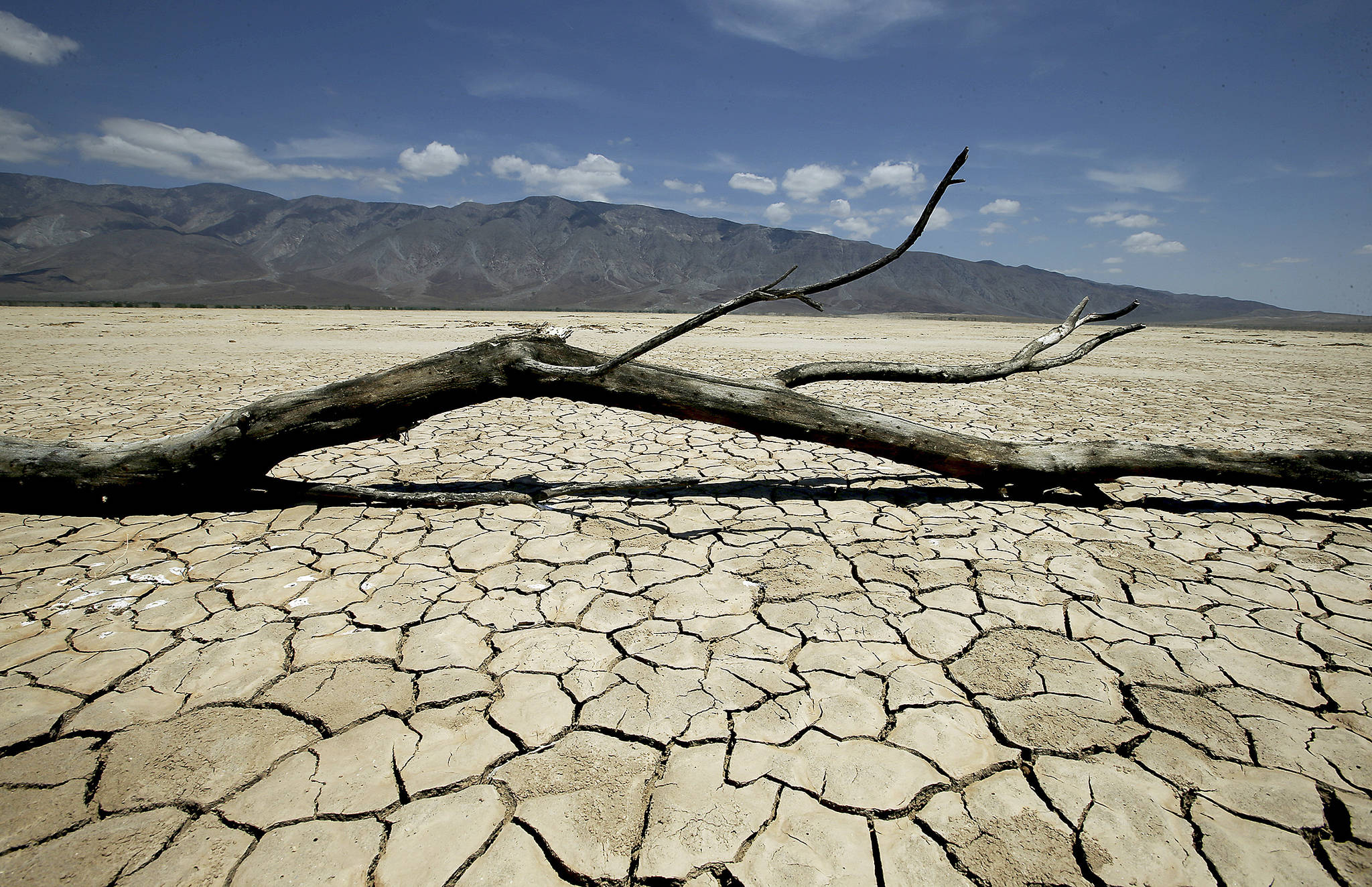By Stuart Leavenworth
McClatchy Washington Bureau
WASHINGTON, D.C. — The Trump administration released a sweeping report Friday that pegged man-made climate change to droughts and wildfires in California and the West, but for reasons you may not expect.
Scientists have uncovered little evidence that climate change is a driver of reduced rainfall and snowfall in the region, including during the drought of 2001-15. But studies have found strong links that higher temperatures, caused by climate change, have reduced soil moisture in California and other states. That in turn has affected farm operations and dried out vegetation, creating fuel for wildfires.
“Much evidence is found for a human influence on surface soil moisture deficits due to increased evapotranspiration caused by higher temperatures,” said the congressionally mandated National Climate Assessment, an annual review of scientific literature on climate change affecting the United States.
Evapotranspiration is the process by which water transfers from the land to the atmosphere through soil evaporation and transpiration from plants. The National Climate Assessment said that man-made climate change has unequivocally increased the risk of high temperatures during the winters of 2013 — 2014 and especially 2014 — 2015, “further exacerbating the soil moisture deficit and the associated stress on irrigation systems.”
Official Washington was surprised that the White House would release a report that contradicts President Donald Trump’s position that man-made climate change is a “hoax.” Since taking office, Trump has sought to remove the United States from the Paris Agreement, an international effort to reduce greenhouse gas emissions, and has appointed climate change doubters such as Scott Pruitt and Rick Perry to head the U.S. Environmental Protection Agency and the Energy Department.
Yet this first volume of the Fourth National Climate Assessment hasn’t been finalized. Further draft volumes are forthcoming, and will be subject to public comment. The final report will then head to Congress and Trump, who could have his science adviser review it. Trump has yet to appoint a science adviser.
At least one prominent Trump supporter suggested Friday that the administration might have preferred to shelve the report, but was unable to do so. “That’s a bedwetting Obama admin report that could not be halted due to understaffing,” tweeted Steve Milloy, a lawyer with oil industry ties who regularly refers to climate change research as “junk science.”
The report makes clear that greenhouse gas emissions and other human activities are the major cause of average global temperatures increasing 1.8 degrees over the last 115 years. There’s “no convincing alternative explanation,” the report states.
“Global climate is projected to continue to change over this century and beyond,” it adds, offering projections on the melting of ice sheets, sea-level rise and other expected effects. “The magnitude of climate change beyond the next few decades will depend primarily on the amount of greenhouse (heat-trapping) gases emitted globally and on the remaining uncertainty in the sensitivity of Earth’s climate to those emissions.”
In separate chapters, the report evaluates where evidence is strong or inconclusive about human climate impact. For example, the report states there is only “medium confidence” that man-made climate change has contributed to warmer conditions in the Atlantic Ocean since the 1970s and these changes have contributed to an increase in hurricanes.
There is also only mid-range confidence that climate change will cause an increase in the frequency and severity of “atmospheric rivers” that can cause serious flooding in California and other western states.
By contrast, the report states there is high confidence that climate change has contributed to an increase in large forest fires in the West and Alaska since the 1980s, and that those fires are “projected to further increase in those regions as the climate warms.” The report is based on peer-reviewed studies published well before the October wildfires in Northern California, which some scientists say show signs of being related to climate change.
California and the West have long experienced droughts, with the geologic record suggesting that some dry periods have lasted decades. Those droughts were caused by shortfalls of rain, snow and runoff. What worries scientists is that an increasing number of future droughts will be influenced by higher temperatures and higher evapotranspiration.
Those temperatures, combined with higher soil moisture deficits “raise the question, as yet unanswered, of whether droughts in the western United States are shifting from precipitation control to temperature control,” the report states.
The question is tricky, in part because soil moisture records in the West are uneven, and some studies are unable to document climate change impact on soil wetness. There is strong consensus that future warming will dry out soils, but the depth of that evaporation will depend on temperatures and other factors.
The National Climate Assessment is one of two recent reports with dire warnings of climate change. The Lancet, a medical journal, released a study this week analyzing the impacts of severe heat waves and other expected effects. Between 2000 and 2016, the number of vulnerable people exposed to a severe heat wave has increased by around 125 million, the report found.
So far, climate change alone has forced at least 4,400 people to migrate because of heat, water shortages, drought and other effects, the Lancet report states. It projects there could be more than 1 billion climate change migrants by the end of the century.


